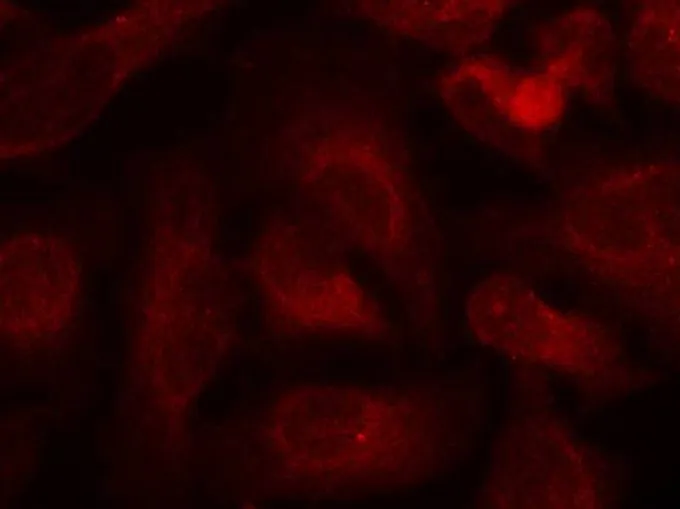c-Abl antibody [19-110]
GTX16903
ApplicationsImmunoPrecipitation, Western Blot
Product group Antibodies
TargetABL1
Overview
- SupplierGeneTex
- Product Namec-Abl antibody [19-110]
- Delivery Days Customer9
- Application Supplier NoteIP: Use at a concentration of 1 - 2 microg/ml. WB: Use at a concentration of 1 - 5 microg/ml. Predicted molecular weight: 145 kDa. Optimal dilutions/concentrations should be determined by the end user.
- ApplicationsImmunoPrecipitation, Western Blot
- CertificationResearch Use Only
- ClonalityMonoclonal
- Clone ID19-110
- Concentration0.1 mg/ml
- ConjugateUnconjugated
- Gene ID25
- Target nameABL1
- Target descriptionABL proto-oncogene 1, non-receptor tyrosine kinase
- Target synonymsABL, BCR-ABL, CHDSKM, JTK7, bcr/abl, c-ABL, c-ABL1, p150, v-abl, tyrosine-protein kinase ABL1, ABL protooncogene 1 nonreceptor tyrosine kinase, Abelson tyrosine-protein kinase 1, BCR-ABL1 p190, BCR/ABL e8a2 fusion, BCR/ABL1 e1a2 fusion protein, BCR/ABL1 fusion, BCR/ABL1 fusion protein e3a1, BCR::ABL1 fusion protein, bcr/c-abl oncogene protein, c-abl oncogene 1, receptor tyrosine kinase, chimeric BCR::ABL1 protein, proto-oncogene c-Abl, proto-oncogene tyrosine-protein kinase ABL1, v-abl Abelson murine leukemia viral oncogene homolog 1
- HostMouse
- IsotypeIgG1
- Protein IDP00519
- Protein NameTyrosine-protein kinase ABL1
- Scientific DescriptionThis gene is a protooncogene that encodes a protein tyrosine kinase involved in a variety of cellular processes, including cell division, adhesion, differentiation, and response to stress. The activity of the protein is negatively regulated by its SH3 domain, whereby deletion of the region encoding this domain results in an oncogene. The ubiquitously expressed protein has DNA-binding activity that is regulated by CDC2-mediated phosphorylation, suggesting a cell cycle function. This gene has been found fused to a variety of translocation partner genes in various leukemias, most notably the t(9;22) translocation that results in a fusion with the 5 end of the breakpoint cluster region gene (BCR; MIM:151410). Alternative splicing of this gene results in two transcript variants, which contain alternative first exons that are spliced to the remaining common exons. [provided by RefSeq, Aug 2014]
- Storage Instruction-20°C or -80°C,2°C to 8°C
- UNSPSC12352203

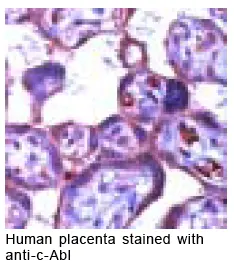
![WB analysis of G361 whole cell lysate using GTX10528 c-Abl antibody [ABL-148]. Lane 1 : 1:4000 dilution Lane 2 : 11:2000 dilution Lane 3 : Negative control](https://www.genetex.com/upload/website/prouct_img/normal/GTX10528/GTX10528_WB_0804_1_22080401_622.webp)
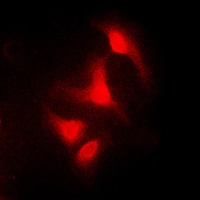
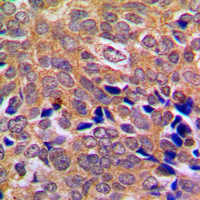
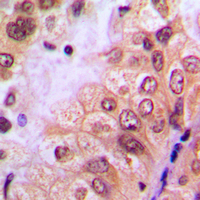
![WB analysis of truncated GST-ABL1 recombinant protein (1) using GTX83337 c-Abl antibody [7B11D6].](https://www.genetex.com/upload/website/prouct_img/normal/GTX83337/GTX83337_20170912_WB_w_23061322_545.webp)

